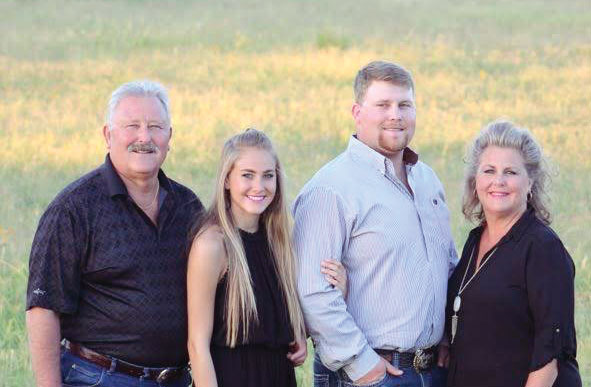
Mike Earwood has a full-time job, serves as his town’s mayor and as a fireman, but he is happiest on the farm
In 1987, Mike Earwood was young and single. He was working at Clarridge Products in Harrison and now is a supervisor of the prefab department.
At the same time, he purchased 40 acres in between where he lived and where he worked, later adding another 43. While Mike learned to love the cattle industry from his uncles, his father Herman, a full-time truck driver, gave Mike a piece of advice he took to heart.
“My dad suggested not to get too big too fast and, as I built my herd, never to purchase more cows than I could afford to lose,” Mike said. “Consequently, I purchased only two or three bred heifers at a time until I was able to save heifers as replacements or for herd expansion.”
Mike never kept a calf from a purchased bred heifer until she produced her second calf. He always wondered why anyone would sell what appeared to be a good heifer. He simply evaluated her second calf to ensure good traits were passed on and she successfully bred back.
Mike met his future wife Shawnette in 1991 at a church fall festival. Shawnette is a registered sonographer and x-ray technologist. The Earwoods have two daughters, Cayanne and Makensey, as well as a grandson Houston who loves the cows.
Mike believes in supporting community. He has been a volunteer fireman for more than 30 years and now serves as a captain. He also is the mayor of Western Grove, Ark., and has been so since 2010. He learned about giving back to community from his father who also served as mayor for many years. Needless to say, between his job, his cattle and his dedication to the community, time management is his biggest challenge
Because the market favors black cattle, Mike’s 32 cows with 10 bred replacements are Angus-based and either black or red. They are bred by two Gelbvieh bulls who subsequently throw red or black calves.
“I tried two calving seasons, but that didn’t work out well with my schedule,” Mike explained. “However, running the bulls with the females allows me to breed back a cow that has lost a calf more quickly, which will then decide whether or not I need to cull her. I will also cull a cow if her teats are too big, and make sucking difficult, or if her feet go bad.”
Mike has one outstanding cow, now 17, who has produced 17 good calves. Mike kept some of her heifers which his daughters showed at the Newton County Fair, winning grand champion heifer many times over.
“I will never sell her,” Mike asserted. “I don’t know how she survived all those calves, but she has definitely earned the right to pass away peacefully on the farm.”
Even though Mike runs the breeding females with the bulls year-round, the herd tends to be mostly naturally synchronized. When Mike is ready to breed young heifers, they receive a shot of Lutalynse to help synchronize them with the other females. However, that shot will also cause any bred heifer to abort so he is very careful to make sure the heifers are not already pregnant. In order to prevent line breeding, he changes bulls every three to four years and keeps track of genetics and other important dat, such as birthing date and weight and weaning weight, in a small notebook he carries with him.
Mike uses a strong vaccination protocol on the entire herd. Additionally, he offers free choice mineral year-round and uses protein tubs in the spring to ensure his herd has plenty of magnesium.
Calves are weaned at approximately 7 months, with steers weighing 600 pounds and heifers about 500. Because the herds are fairly well synchronized, Mike weans calves right before taking them to Morris Cattle Company. He has sold there for a long time and especially appreciates that they work Saturdays, thereby preventing Mike from having to take a day off work to sell calves.
Mike prefers calves being born in November and October because they reach weaning before the summer heat. Consequently, he sells calves before the market makes its typical fall drop due to the market being flooded with calves at that time. Further, if the market is lower than he’s comfortable with and his grass is good, he will sometimes retain calves a bit longer until the market reaches a more comfortable price point.
Mike feels he has as many cattle as his land can comfortably support and therefore almost always buys his hay. Purchasing hay also saves both time and the cost of expensive equipment.
The land is fertilized with chicken litter in February and broadcast sprayed with a mixture of Grazon P plus D and Remedy in March or April, depending upon when the land greens up. He also has a sprayer hooked up to the back of his 4-wheeler allowing him to spot spray as he checks his herd.
When Mike retires, he is looking forward to he and Shawnette traveling.
A true cattleman at heart, Mike confided, “I don’t want to travel too much because there is nothing better than finding a new calf, something I don’t want to miss.”







